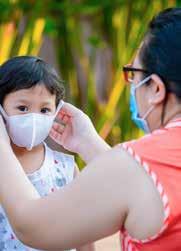Healthy You
Your guide to living well







Healthy You is an award-winning magazine featuring health and wellness articles and promoting practical tools that support and encourage healthier choices.
This educational resource for UMR members is published four times a year as part of our member online services and can be viewed, downloaded and shared digitally.
Healthy You is packed with helpful resources and practical recommendations to address the most common health topics, including:
• Building healthy habits
• Preventive care recommendations
• Chronic health conditions
• Exercise tips
• Nutrition and recipes
• Stress and mental health management
• First aid and getting care
• Health literacy
• Spanish-language resources

While using this electronic publication, you may click on a link to other websites. We provide links to other websites that may contain information that may be useful or interesting to you. We do not endorse, and are not responsible for, the content and accuracy of linked websites operated by third parties or for any of your dealings with such third parties. You are solely responsible for your dealings with such third parties, and we encourage you to read the terms of use and privacy policies on such third-party websites.
Available features and benefits are dependent on the products and features included in the plan design. Not all members will have access to all features shown.
Copyright © 2025 United HealthCare Services, Inc.
Reproduction in whole or part is not permitted without permission in writing from UMR. All information and links were accurate and functional at the time of publication. However, because this electronic publication contains links to third-party sites, information can change and become unavailable.
Your
Not

Learn
Track all your claims in one place

Check in at your convenience to see if a claim has been processed and what you might owe. You can search the claim activity for everyone on your plan, view your claims cost summary or submit a new claim.
Check out this FREE resource. Sign in to your member account on umr.com.
Welcome to a smarter, simpler, faster way to manage your health care benefits, right from the palm of your hand.


The UMR app has a smart fresh look, simple navigation and faster access to your health care benefits information. View your plan details on demand — anytime, anywhere.
With a single tap, you can:
• Access your digital ID card
• See a personalized list of your things to do to stay on top of your health and keep your benefits up to date
• Look up in-network health care providers
• Find out if there’s a copay for your upcoming appointment
• View your recent medical and dental claims
• Chat, call or message UMR’s member support team

Download the UMR app today!
Simply scan the QR code or visit your app store to get started.
Winter can be a beautiful time to experience nature and connect with others. It can also be cold and dark, and difficult to get out and be with people. But getting regular sunlight and exercise is key to regulating your internal clock and your mood. And social isolation has been linked to serious health risks similar to those of smoking, obesity and physical inactivity.
Go for a 10-minute walk during a break at work.
Make a mini snowman if you have a balcony or deck on your home.
Catch snowflakes on your tongue.
Get up early and watch the sunrise glisten off the snow.
Put on your boots and walk on a trail in a park.
Wear your warmest parka and take a bike ride.
While they may take a little extra preparation or effort, there are quick ways to have fun outdoors and connect with your community during winter. Here are some ideas to get you started. Your mind and body will thank you!










































Drink hot chocolate on your porch.
Take your dog to an outdoor dog park.



Mix some food coloring with water and do snow painting.
Kick a soccer ball around with a friend.
Meet some friends to go sledding after work.
Bundle up with a blanket on a park bench and bird watch.
• Join a winter bowling league.
• Check if there are any card game clubs at your community center.
• Invite family and friends over for Sunday dinner.
• Take a language class.
• Volunteer at a church or school for winter activities.
• Start a virtual book club.
• Find indoor places, such as a mall, to walk when the weather is cold.
• Check social media to see what events your community holds during winter.
• Organize friends to play an online game together at the same time each week.
• Attend an event at a museum or art gallery.
• Take an online yoga class.
• Volunteer at a pet shelter.
Endocrine system, hormones, metabolism, thyroid, pituitary — you’ve heard of them, but do you know how they work together like a well-oiled machine to control the amazing functions of your body?



Your endocrine system is a network of glands that releases hormones into your body. Hormones are chemicals that act like messages carried through the blood and released to various organs, your skin, muscles and other tissues. These messages tell your body what to do and when to do it.
The endocrine system includes glands you’ve probably heard of, such as pituitary, adrenal, ovaries, testes and thyroid. We’re going to focus on the thyroid and find out how it works, what may happen when it’s not functioning properly and how to keep it healthy.
The thyroid is a small, butterfly-shaped gland located at the base of the front of your neck. The thyroid’s main job is to control the rate of your metabolism — the process of your body transforming the food you consume into energy. All cells in your body need energy to function.
Your thyroid makes and releases four different hormones.
To make these hormones, your thyroid needs iodine, which is an element found in many foods, but most commonly iodized table salt and water. Too much or too little iodine in your body can affect the level of hormones your thyroid makes and releases.
Almost every organ system in your body relies on the thyroid’s hormones to keep them running properly, including the cardiovascular, nervous, digestive and reproductive systems.

Iodine-rich food



A thyroid that does not work properly can impact your entire body. Thyroid disease is common, with about 20 million Americans living with a disorder. Women and those assigned female at birth are about five to eight times more likely to develop a thyroid condition than men and those assigned male at birth. The four main conditions that can affect your thyroid include:
Hypothyroidism (an underactive thyroid)
This occurs when your thyroid doesn’t produce and release enough hormones. It can cause your metabolism to slow down, and it is treatable.
Hyperthyroidism (an overactive thyroid)
When your thyroid produces and releases more hormones than your body needs, your overactive thyroid will cause your metabolism to speed up. This, too, is treatable.
Goiter (an enlarged thyroid)
Many times, when your thyroid doesn’t produce enough hormones to meet your body’s needs, the thyroid will overcompensate by enlarging. A goiter is treatable, as well.
Thyroid cancer
There are four types of thyroid cancer, classified based on the type of cells from which the cancer grows. Approximately 53,000 Americans are diagnosed each year, and treatments for most thyroid cancers are successful.
The signs of a thyroid condition can be difficult to recognize. Since the thyroid plays such a critical role in body systems, like metabolism, heart rate and temperature control, certain symptoms can help raise a red flag. Those may include:
• Depression and anxiety
• Difficulty tolerating heat and cold
• Slow or rapid heart rate
• Unexplained weight loss or gain
• Irregular menstrual periods
A blood test that measures the levels of thyroidstimulating hormone (TSH) is the primary method of diagnosing a thyroid condition. Many times, if this test comes back abnormal, your provider may order a thyroid scan, which is like an ultrasound.

As always, if you’re concerned about your health or have questions, be sure to talk to your health care provider.

For those experiencing thyroid disease, depending on the diagnosis and symptoms, a provider has three main lines of defense to treat it:
• Medication
• Surgery
• Radiation/chemotherapy
There are various types of medication used to treat abnormalities, depending on the diagnosis. The most common type of surgery is a thyroidectomy. This is the removal of the thyroid. You can live without your thyroid, but doing so requires hormone replacement medication to stay healthy and prevent symptoms and side effects due to the lack of hormones produced naturally. As for radiation and chemotherapy, these will kill cancer cells and prevent them from growing, but most cases of thyroid cancer do not require either. Generally, medication and surgery are the chosen lines of treatment.
Since your thyroid depends on iodine to make hormones, make sure you have enough in your diet. Table salt contains iodine, so most people ingest it that way. Be careful not to consume too much iodine, however, as it can lead to thyroid problems.
For decades, people have been conditioned to think fats in food are bad and that foods with high fat levels should be avoided at all costs. In the United States, dietary fat has been seen as the primary cause of weight gain and other health issues, leading many to frown at foods with high fat content. However, not all fats are inherently bad.
Understanding the functionality of dietary fats is key to making an informed choice about your diet. Knowing the difference between “good” fats and “bad” fats can help you maintain a balanced and healthy diet.
The different types of fat you consume impact your health in different ways. Let’s take a look at beneficial and detrimental fats (aka the good vs. the bad).

Monounsaturated fats: These are found in foods such as vegetables,

I had no idea!
Monounsaturated fats are known to help lower “bad” cholesterol levels while increasing “good” cholesterol levels. These fats are also associated with lowering the risk of heart disease.
These include omega-3 and omega-6 fatty acids, which are essential for normal body function. Omega-3 is typically found in flaxseeds and chia seeds, walnuts, and fatty fish, such as salmon, mackerel and sardines.
Your body cannot make this type of fat, so you must get it from food. Omega-3 fatty acids in particular have been shown to reduce inflammation, lower blood pressure and decrease the risk of heart disease.




Saturated fat and trans fat can be potentially harmful to your health.


These are typically solid at room temperature and are found in animal products like red meat and dairy, in addition to certain oils — picture bacon grease after it’s been cooled.
High intake of saturated fats could lead to an increase in cholesterol, which can lead to heart disease and stroke. Nutritionists recommend limiting this type of fat to less than 10% of your daily calorie intake.



Trans fats are a byproduct of a hydrogenation process, which turns liquid oils into solid fats.
This is the worst type of fat and is therefore banned in the United States. Despite the ban, small amounts of trans fats may be present in some processed and packaged foods, including commercial baked goods, fast food and margarine.


Trans fats are particularly harmful because they increase LDL (bad) cholesterol but also decrease HDL (good) cholesterol, putting your heart health at risk. Health experts recommend avoiding trans fats altogether. To do so, read ingredient lists, and try not to eat foods that contain partially hydrogenated oils.
You don’t have to give up red meat altogether, but it would be beneficial to cut back on the saturated and trans fats.
Understanding that fat is not inherently harmful, but rather a necessary component of a balanced diet, can shift the way you approach your food intake.

Make healthy choices:
By emphasizing unsaturated fats and omega-3 fatty acids while minimizing saturated and trans fats, you can:

Switch it up:
• Cut back on eating processed snacks, fried foods and fatty cuts of meat.
• Try a lean protein source, such as turkey or chicken instead of red meat.
• Choose whole foods over heavily processed options.
Decrease the risk of heart disease
Reduce inflammation
Lower blood pressure
Support your heart health and overall well-being
• Opt for olive oil instead of butter.
• Snack on nuts instead of candy.
• Include fatty fish in your weekly diet.
• Include seeds and avocados.

Finding a network provider on umr.com or the UMR app has


Go to umr.com and select Find a provider
Look for the name of your provider network on your ID card
Don’t have your ID card handy?
That’s OK. If you sign in to umr.com or the UMR app, you will be directed to your in-network provider listing.
Begin a search for your provider network using our alphabet navigation, or type the name into the Search box








Developmental disabilities are a range of conditions that affect a person’s physical, learning, language or behavior abilities. These disabilities manifest before the age of 22 and can impact motor skills, cognition, communication and social skills. They can occur among all racial, ethnic and socioeconomic groups.

Here are some facts about five of these conditions and how they’re diagnosed.
Autism spectrum disorder (ASD) affects how individuals interact with others and communicate. Some may prefer being alone rather than with large groups of people. It can also involve repetitive behaviors.
DIAGNOSIS: It is based on descriptions of the individual’s development plus observations of behaviors by doctors and medical test results.
Intellectual disabilities affect intellectual functioning and adaptive behavior, such as how a person learns, reasons and solves problems. It can affect anyone at any age but is usually present at birth and can continue to manifest up to age 18.
DIAGNOSIS: It is based on an IQ score below 70 and observed difficulties in skills needed for daily living, such as communication, self-care and social skills.
Behavioral disabilities affect how a person behaves. Genetics and environmental causes play a part in most behavioral disabilities. Some examples include attention-deficit/hyperactivity disorder (ADHD), oppositional defiant disorder (ODD), post-traumatic stress disorder (PTSD) and obsessive-compulsive disorder (OCD).
DIAGNOSIS: It is based on a description of the individual’s development and behavior plus information gathered from other sources, such as teachers, caregivers and doctors.
Cerebral palsy affects physical movement, motor skills and muscle tone. Cerebral palsy typically occurs during fetal development or in early childhood, usually before the age of 2. Current estimates show that it affects about 1-4 of every 1,000 births.
DIAGNOSIS: A doctor may use an ultrasound, computed tomography (CT), magnetic resonance imagine (MRI) or electroencephalogram (EEG) to perform a brain scan to look for damage in the brain.
Spina bifida is a neural tube defect where the spinal column doesn’t form correctly, leading to a gap in the backbone. This condition can sometimes be accompanied by hydrocephalus or other issues related to fluid buildup in the brain, which may cause developmental delays and learning disabilities.
DIAGNOSIS: Spina bifida can be diagnosed during pregnancy with an ultrasound or after pregnancy by performing an MRI or CT scan of the spinal cord and vertebrae.
Developmental disabilities can occur due to a mix of genetic and non-genetic factors.
Genetics come into play when there are problems with genes inherited from parents or when genes don’t combine correctly. Infections during pregnancy can also affect how genes work. Here are a few examples:
Phenylketonuria (PKU)
When you’re unable to process a part of a protein called phenylalanine. If untreated, it can build up in the blood and cause developmental problems.
Down Syndrome
When a person has extra or too few chromosomes or there’s a change in chromosome structure.
Fragile X syndrome
A single-gene disorder that leads to problems with learning and development and is the leading cause of genetic developmental disabilities.
Prenatal
Using alcohol or drugs, malnutrition, environmental toxins and illnesses such as toxoplasmosis, cytomegalovirus, rubella and syphilis.
Perinatal
Not getting enough oxygen before or during birth or being born premature.
Postnatal
Having diseases or conditions such as whooping cough, chickenpox and measles.


Research shows that people with developmental disabilities often have notable strengths, including a love of learning, honesty, kindness and humor.
A study in the American Academy of Pediatrics found that 59.1% of individuals with autism had an average or higher IQ, highlighting their potential for high intelligence.
These strengths vary by individual and disability type, such as creativity in individuals with autism or kindness in individuals with intellectual disabilities. Recognizing these strengths can raise self-esteem, improve support strategies, and open doors to opportunities in employment and community life.
Many individuals with developmental disabilities are strong visual learners who tend to understand and retain information better when they see it. Effective learning styles often include:
Visual aids
Using pictures and diagrams such as charts, labels and signs.
Hands-on activities


Practical, interactive tasks that involve using physical objects to support learning.
Clear directions
Providing written materials alongside simple verbal directions to improve comprehension.
Multisensory methods
Including visual, auditory and kinesthetic elements.
Repetition and practice
Regular review that reinforces learning.
These methods cater to various needs and can make learning more accessible and engaging for individuals with developmental disabilities.
Understanding developmental disabilities can reveal challenges and unique strengths. By recognizing these strengths and tailoring support strategies, we can help others or ourselves lead satisfying and fulfilling lives.

Living your healthiest life means taking charge of your wellness. And a new year is the perfect time to schedule screenings and checkups and make sure you’re up to date on vaccines.
Your family health history can make you more likely to have certain diseases. Your personal health history may also mean you need different screenings or additional immunizations. So it’s important to understand your risk factors and get screenings or shots to help prevent problems or find them early — when they are most treatable.
Many preventive/routine screenings and vaccines may be covered at 100% if you visit an in-network provider. That means you could have no out-of-pocket costs. So why wait? Start getting the most out of your benefits today by checking out our handy screening and vaccine charts for adults. Your future self will thank you!
Always discuss your health care needs with your physician.

One-time screening
Abdominal aortic for men ages 65-75 aneurysm who have smoked at least once.
Anxiety and/ Regular screenings for all adults. or depression
Blood pressure
Regular in-office screenings for those 18 years and older without hypertension. (hypertension)
Breast cancer
Screenings every other year from ages 40-74. (mammogram)1
Ask your doctor if you need testing after age 74.
Cervical cancer
At least every three years from ages 21-65.2 (pelvic exam/Pap smear)
Ask your doctor if you need testing after age 65.
Chlamydia and Screening for sexually active women 24 years or younger, Gonorrhea or for those 25 or older who are at increased risk.
Colorectal cancer
Diabetes
Regular screenings from ages 45-75. Ask your doctor if you need testing after age 75.
Screening for prediabetes and type 2 diabetes for adults ages 35-70 years who are overweight or obese with no current symptoms of diabetes.
Hepatitis C (HCV) Screening for adults from ages 18-79.
Human Immunodeficiency
Regular screenings for sexually active adolescents and adults from ages 15-65. Virus (HIV)1
Lung cancer
Osteoporosis1
Prostate cancer1
Yearly screening for all adults ages 50-80 years who have who have smoked at least 20 packs in a year and currently smoke or have quit within the past 15 years.
Screenings for women ages 65 and older.
From ages 55-69, men may want to talk to their doctor about the risks and benefits of screening.3
COVID-19
Hepatitis B
Human papillomavirus (HPV)
Influenza (flu)
Measles, mumps, rubella (MMR)
Pneumococcal vaccine (pneumonia)
Respiratory syncytial virus (RSV)
Tetanus/diphtheria (Td/Tdap)
Varicella (chicken pox)
Zoster recombinant (shingles)

One or more doses of latest vaccine every year depending on vaccination status.
Complete a two-, three- or four-dose series depending on vaccination history and risk factors.
Two or three doses depending on initial vaccination or condition. Talk to your doctor about vaccination need and frequency from ages 27-45.
One dose annually.
After age 59, talk to your doctor about need and frequency.
One or two doses depending on if you were born after 1957.
One dose for those with certain underlying medical conditions or other risk factors.
At age 65, one or two doses may be needed based on previous vaccination.
One dose after the age of 60.
One-time dose of Tdap, then Td booster every 10 years.
Two doses if there is no documentation of vaccination or immunity, or if born after 1980.
Two doses for those who are immunocompromised.
Two doses after the age of 50, two to six months apart.
The recommended screening and immunization/vaccine lists are from the United States Preventive Services Task Force (USPSTF) and the Centers for Disease Control and Prevention (CDC). The guidelines are for general reference only and are not meant to be all-inclusive. These recommendations are for adults who are at average risk and do not have any symptoms or diagnoses of the conditions mentioned. Some professional organizations have differing or additional recommendations. There are additional screenings recommended for pregnant people.
Vaccines help the body learn how to defend itself from disease without the dangers of a full-blown infection. The immune response to a vaccine might cause tiredness and discomfort for a day or two, but the resulting protection can last a lifetime.
Vaccines work by imitating an infection to engage the body’s natural defenses. The active ingredient in all vaccines is an antigen, the name for any substance that causes the immune system to begin producing antibodies.
In a vaccine, the antigen could be any of the following:
• Weakened or killed bacteria or viruses
• Bits of a bacteria’s or virus’s exterior surface or genetic material
• Bacterial toxin treated to make it non-toxic
Antibodies are proteins produced by white blood cells to identify and neutralize foreign substances. White blood cells are created in the bone marrow but dispersed throughout the body in low numbers, ready to begin multiplying and attacking microbes and substances not native to the body (like viruses). After they have eliminated an infection, white blood cells stop multiplying and their numbers dwindle until only a few are left to keep watch. At that point, a person is considered immunized.
Because immunity can take weeks to develop after vaccination, it is possible to become infected in the weeks immediately following vaccination. Even after that, vaccinated people can and sometimes do get infected.
A vaccinated person is far less likely to die or become seriously ill than someone whose immune system is unprepared to fight an infection.

There is no evidence that vaccines can cause autism or sudden infant death syndrome (SIDS). Most vaccine reactions are usually temporary and minor, such as a fever or sore arm.
The Centers for Disease Control and Prevention (CDC) offers tips for locating your vaccination records and what to do if you can’t find them. While it may take some effort to track down your vaccination history, it’s important. Vaccines protect not only you, but others around you whose health may be compromised or who can’t get certain vaccines themselves.




Where you go for medical services can make a big difference in how much you pay and how long you wait to see a health care provider. Explore the following information to help you decide the appropriate setting for your care.
1 2 3 What you need to do:
Locate your member ID card
Find a provider
On your member ID card, you’ll find:
• Your PPO network
• Contact number
• Pharmacy contact, if applicable
You can also visit our website at umr.com.
Go to the CDC for the latest information on COVID-19, including vaccines, cases and data, how to protect yourself and what to do if you are sick.
Determine the severity of the symptoms and choose the provider that works for you.
If you are severely ill and/or it’s an emergency, call 911.
Retail clinics, sometimes called convenience care clinics, are located in retail stores, supermarkets and pharmacies. You can find over-the-counter medications, and you can talk to your pharmacist for help.
TIMES TO GO:
• Vaccinations or screenings
• Sinus infections
• Minor sprains, burns or rashes
• Headaches or sore throats
Expect to wait 15 minutes or less
Average cost $50-$100 (per service for non-employer sponsored facilities)
Urgent care centers, sometimes called walk-in clinics, are often open in the evenings and on weekends.
TIMES TO GO:
• Sprains and strains
• Sore throats
• Minor broken bones or cuts
• Minor burns
• Minor infections or rashes
• Earaches
Expect to wait 20-30 minutes
Average cost $150-$200 (for non-employer sponsored facilities)
(NOT URGENT)
Seeing your doctor is important. Your doctor knows your medical history and any ongoing health conditions.
TIMES TO GO:
• Preventive services and vaccinations
• Medical problems or symptoms that are not an immediate, serious threat to your health or life
Expect to wait 1 day to 1 week or more for an appointment
Average cost $100-$150
Visit the ER only if you are badly hurt. If you are not seriously ill or hurt, you could wait hours, and your health plan may not cover non-emergency ER visits.
TIMES TO GO:
• Sudden weakness, trouble talking or blurred vision
• Large open wounds
• Difficulty breathing
• Severe head injury
• Heavy bleeding
• Spinal injuries
• Chest pain
• Major burns
• Major broken bones
Expect to wait 3-12 hours (for non-critical cases)
Average cost $1,200-$1,500

Find out why rebounding may be your new favorite workout.

The up-and-down movement stimulates your lymphatic system. This means not only are you getting a good workout, but you’re also supporting your body’s natural detox process.









The word “trampoline” might bring to mind images of children giggling and playing with friends on a warm summer afternoon. Or maybe you think of professional gymnasts using them to leap into a complicated sequence of moves. But trampolines aren’t just for kids or athletes. Rebounding, or bouncing on a mini-trampoline, can also be an easy, fun way to improve your health — no matter your age or fitness level.



The best part is, all you need to get started is a small trampoline and yourself. This activity can also be enjoyed indoors, so you can get jumping whenever the mood strikes.
Below are a few of the health benefits of a rebounding workout:






Adding rebounding to your daily schedule may be easier than you think. Here are a few ways you can fit some bounces into your life:
If you already have a tried-and-true workout regimen, you can always start off with a few low, easy jumps to warm up your muscles.
Step away from your desk for a few minutes to get your blood pumping.
Full routine
Sequence through different movements for a complete workout. There are several free videos available online if you search for terms like “rebounding cardio” or “mini-trampoline workout.”



If you prefer company during your sweat sessions, you can join a gym with trampoline equipment or go to a class. Some fitness studios are solely dedicated to this type of workout, while others may offer rebounding classes on a schedule.

Don’t be afraid to mix things up!
If you want to challenge yourself or target specific muscle groups, consider adding an exercise ball or weights into your rebound routine.





benefits. Whether you workouts or reconnect with your inner child,
We all know we need a healthy amount of quality sleep to feel our best. But what does that really mean? Let’s dive into the health benefits of sleep and ideas for making the most of our slumber.



Both the amount of sleep you get and the quality of your sleep can impact your health in more ways than you might realize. Getting enough sleep can help you:
During sleep, your immune system releases proteins called cytokines, some of which help promote sleep. Certain proteins need to increase when you have an infection or inflammation, or when you’re under stress. Sleep deprivation may decrease production of these protective cytokines.
Sleep regulates two important hormones that influence appetite: ghrelin and leptin. Ghrelin tells your body it’s hungry, while leptin tells it you’re full. Short sleep duration increases ghrelin levels and decreases leptin levels.
Sleep helps reduce the body’s production of cortisol, a stress hormone that’s responsible for the fight-or-flight response. Not getting enough sleep can also worsen mood disturbances such as anger, depression and anxiety, and can lead to confusion and fatigue.
During normal sleep, your blood pressure goes down. Having sleep problems means your blood pressure stays higher for a longer period of time. High blood pressure is one of the leading risks for heart disease and stroke.
Chronic sleep deprivation may lead to insulin resistance, which can result in high blood sugar and diabetes.
Lessen the risk of motor vehicle crashes and related injury or death
According to a study by the AAA Foundation for Traffic Safety, people who sleep six to seven hours a night are twice as likely to be involved in a sleep-related crash as those sleeping eight or more. People sleeping less than five hours increase their risk four to five times.
Improve your attention and memory.
Sleep helps clear abnormal proteins in your brain and consolidates memories, which boosts your overall memory and brain health. Excessive daytime sleepiness can make it hard to focus and pay attention. This can impact driving safety and workplace errors.

Most adults need 7-9 hours of sleep

Adults age 65+ need 7-8 hours of sleep

Teens need 8-10 hours of sleep
Sleep hygiene is a set of healthy habits and environmental factors that can help you get to sleep quickly and improve the quality of your sleep.
Proven sleep habits include:
Going to bed and getting up at the same time every day
Keeping your bedroom dark, quiet, relaxing and cool
Turning off electronic devices at least 30 minutes before bedtime
Leaving your phone in a different room or turning on downtime if you use your phone as an alarm
Avoiding large meals and alcohol before bedtime
Avoiding caffeine in the afternoon or evening
Exercising regularly and maintaining a healthy diet
Did you know sleep disorders such as insomnia, apnea, narcolepsy and restless legs syndrome have been linked to a higher risk of cardiovascular disease? One more reason to practice good sleep hygiene.
There has been a surge in products and techniques to help improve sleep hygiene, including:
Sleep-specific podcasts that distract your mind from worries while helping you relax
Noise machines or apps that help filter out distracting sounds
Over-the-counter gadgets that may minimize snoring
Specialized pillows for side, stomach or back sleepers
Weighted blankets
Essential oils that can be applied to your body or diffused in your bedroom
Eye masks and earplugs
Air purifiers and humidifiers
Herbal drinks and supplements (always check with your doctor before starting a new supplement)
There are many well-known risk factors for heart disease. Some risk factors can be reduced (modifiable) and some risk factors can’t be changed (non-modifiable). Here are a few examples of each:
• Obesity
• Unhealthy blood cholesterol levels
• High blood pressure
• Diabetes
• Physical inactivity
• Smoking or tobacco use/exposure
• Drinking too much alcohol
• Eating a diet high in saturated fats, trans fat and cholesterol
The chance of developing — or worsening — heart-related disease increases greatly with the number of risk factors you have.
• Reduce your risk for heart disease by working on the risk factors you can minimize or manage.
• Talk to your doctor about your exercise, diet and lifestyle habits, and managing your health conditions.
Genetic factors likely play some role in heart disease. However, it is also likely that people with a family history of heart disease share common environments and other factors that may increase their risk. The risk can increase even more when heredity combines with unhealthy lifestyle choices.
Heart disease is the leading cause of death for people of most racial and ethnic groups in the United States, including African Americans, American Indians and Alaska Natives, and White people. For Asian American, Pacific Islander and Hispanic people, heart disease is second only to cancer.
More women than men die of heart disease every year. Yet treatment for women is regularly delayed and their conditions are often misdiagnosed. That’s because it can develop and present in dramatically different ways in women and men.
The risk of heart disease increases with age, especially for people over 65. Aging processes in other organ systems, including the muscles, kidneys and lungs, also likely contribute to heart disease. Changes in metabolism, including insulin resistance, are increasingly recognized as risk factors.
National Developmental Disabilities Awareness National Nutrition Month
Your health care manager at your fingertips
Sign in to umr.com to see a personalized to-do list that highlights the steps YOU need to take to stay on top of your health and keep your benefits up to date. Personalization is based on your company’s health benefits plan and the programs you are eligible for.

• Review and complete health actions
• Provide/verify your email address
• Provide other insurance information
• Update security questions
• Review new claims
Visit umr.com today to take advantage of this time-saving feature! Your things to do may prompt you to:
• Be promptly alerted to any denied claims
• Provide accident details
• Go paperless
• Get to know UMR
• Take your clinical health risk assessment (CHRA)
Craving a burger and fries? Try this easy, healthy version that’s full of color and healthy omega-3 fats.

For the Sweet Potato Oven Fries:
• 4 large sweet potatoes (yams)
• 1 1/2 tablespoons canola oil
For the Salmon Burgers:
• 1 can 14.75-ounce pink or red salmon
• 2 green onions, chopped
• 1/2 cup chopped red bell pepper
• 8 crackers, unsalted tops (saltine-like), crushed
• 2 teaspoons lemon juice
• Egg whites from 2 eggs, whisked
• 2 tablespoons plain low-fat yogurt
• 1/4 teaspoon ground black pepper
• Olive oil
• Cooking spray
• 4 whole-wheat buns
• 8 leaves Bibb lettuce
• 2 medium tomatoes (sliced)
• 1 tablespoon lemon pepper seasoning blend
Recipe courtesy of U.S. Department of Agriculture.

1. Place oven rack in center of oven and heat to 425°F.
2. Wash and scrub sweet potatoes, and slice into wedges lengthwise.
3. In a large bowl, toss potato wedges with olive oil and lemon pepper seasoning.
4. Spread on cookie sheet. Roast in the oven, turning occasionally, until tender and golden brown, about 30-40 minutes.
5. While sweet potatoes are roasting, prepare salmon burgers. Drain salmon; place in a medium mixing bowl and flake with a fork.
6. Fold in green onions, red pepper, crushed crackers, lemon juice, egg whites and yogurt.
7. Shape into 4 equal-sized patties.
8. Coat large nonstick skillet lightly with cooking spray; heat.
9. Cook salmon burgers until golden brown, turn and continue cooking until other side is golden brown.
10. Serve burgers with sliced tomatoes and lettuce, and sweet potato oven fries.
For more healthy recipes, visit MyPlate Kitchen.

El sitio web Seguro para miembros umr.com esta disponible en español. 1 2 3
Simplemente, inicie sesión en umr.com con su nombre de usuario y contraseña.
Para obtener información de salud confinable, visite umr.com y seleccione Health education library (Biblioteca de educacion en salud).
Usted verá un menú desplegable en la parte superior de su pantalla de inicio con múltiples opciones de idiomas, que incluye español.
Seleccione la opción de español y verá como en su pantalla el contenido aparecerá traducido al español.
Para nuestros miembros de UMR que hablan español, los Institutos Nacionales de Salud (NIH por sus siglas en inglés) es un gran recurso para obtener información sobre temas de salud, desde alergias hasta Zika. Cada mes, el boletín electrónico destaca nuevos recursos para aquellos que hablan español, y sus amigos y familiares. Puede visitar el portal y suscribirse al boletín en salud.nih.gov

UMR is a third-party administrator (TPA), hired by your employer to help ensure your claims are administered correctly, so your health care costs can be kept to a minimum and you can focus on your health and well-being.
UMR is not an insurance company. Your employer pays the portion of your health care costs not paid by you.
UMR is a UnitedHealthcare company. © 2025 United HealthCare Services, Inc.